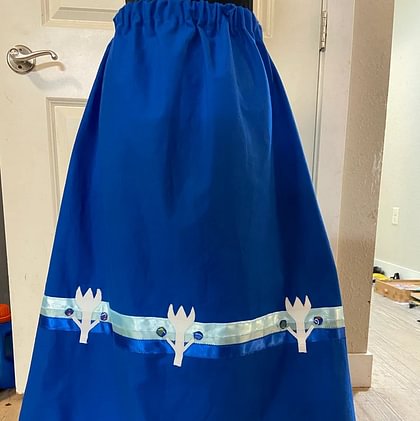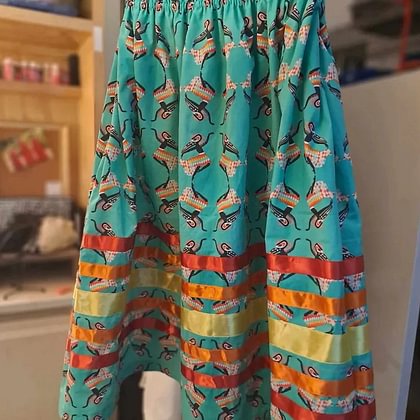Embracing Tradition: The Resurgence of Native Ribbon Skirts

In recent years, there has been a notable resurgence in the popularity and appreciation of Native Ribbon Skirts among Indigenous communities and beyond. These traditional garments hold deep cultural significance and are revered for their intricate designs and storytelling elements. Originally worn by Indigenous women for ceremonial purposes, the Ribbon Skirt has evolved into a symbol of cultural pride and resilience, reflecting the strength and creativity of Indigenous peoples.

The vibrant colors and patterns adorning Native Ribbon Skirts are not merely decorative but carry immense cultural and spiritual meaning. Each design is thoughtfully chosen to convey personal and communal stories, connecting wearers to their ancestral roots and honoring their heritage. As the resurgence of these skirts continues to gain momentum, it is also sparking conversations around cultural appropriation versus appreciation, encouraging a deeper understanding and respect for Indigenous traditions and art forms.
History of Native Ribbon Skirts
Native ribbon skirts hold a rich history deeply rooted in Indigenous cultures across North America. Traditionally worn by women for ceremonial and everyday purposes, these skirts are adorned with vibrant ribbons that are significant to the wearer's community and heritage.
The design of each skirt reflects the unique cultural identity of the tribe it originates from, with specific colors and patterns holding symbolic meanings. These skirts are often passed down through generations, carrying the stories and traditions of the wearer's ancestors.
Over time, Native ribbon skirts have evolved to become a powerful symbol of cultural resilience and pride. As Indigenous communities strive to preserve and revitalize their traditions, the resurgence of these skirts has become a visible expression of reclaiming identity and honoring the heritage of Native peoples.
Symbolism in Native Ribbon Skirts
Native Ribbon Skirts hold deep cultural significance within indigenous communities. The various colors and patterns featured on these skirts often represent different aspects of nature, such as the earth, sky, and water. The intricate designs are not merely decorative but carry stories and teachings passed down through generations.
In addition to representing the natural world, Native Ribbon Skirts also serve as a form of storytelling. Each pattern stitched onto the fabric may convey specific meanings related to the wearer's tribal heritage, personal experiences, or familial connections. Through these symbolic designs, individuals can express their identity and honor their ancestors while maintaining a connection to their roots.
Furthermore, the act of creating and wearing a Native Ribbon Skirt is a powerful form of cultural preservation. By continuing read more of making and wearing these skirts, indigenous communities are able to keep their customs alive and ensure that future generations understand the significance of these garments. The symbolism embedded in each stitch serves as a constant reminder of resilience, strength, and the enduring spirit of Native peoples.
Modern Trends in Native Ribbon Skirts

In recent years, Native Ribbon Skirts have seen a revival in popularity within Indigenous communities and beyond. Many designers are incorporating contemporary elements into traditional skirt designs, blending old and new aesthetics to create unique pieces that reflect modern sensibilities.
One notable modern trend is the use of vibrant and unconventional color palettes in Native Ribbon Skirts. While traditional skirts often feature earthy tones and muted colors, contemporary designs are embracing bright hues and eye-catching combinations that appeal to a wider audience.

Another emerging trend is the fusion of different textile techniques in creating Native Ribbon Skirts. https://www.ribbonskirts.com/collections/ribbon-skirt are experimenting with various methods such as beading, appliqué, and embroidery to add intricate details and textures to the skirts, resulting in visually striking and one-of-a-kind pieces.
